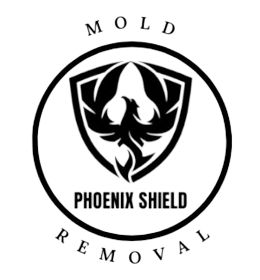Mold can be an unwelcome guest in any home, and recognizing its presence is crucial for prompt action. In this guide, we’ll educate you on how to identify mold in your home by highlighting the common signs, symptoms, and visual clues that may indicate mold growth. By the end of this article, you’ll be better equipped to spot and address potential mold issues, ensuring a healthier living environment for you and your family.
Common Signs of Mold Growth
- Musty Odor: One of the most telltale signs of mold is a musty, earthy odor. If you notice an unpleasant smell, especially in specific areas of your home like the basement or bathroom, it could be an indicator of mold growth.
- Visible Growth: Mold often appears as discolored patches or spots on surfaces. It can be black, green, brown, or even white. Keep an eye out for any unusual stains or spots on walls, ceilings, or floors.
- Allergic Reactions: If you or your family members suddenly experience allergic reactions like sneezing, coughing, itchy eyes, or skin rashes when at home, mold may be the culprit.
- Water Leaks or Moisture Issues: If you’ve had recent water leaks, flooding, or persistent moisture problems in your home, these conditions create an ideal environment for mold growth.
- Condensation: Mold can thrive on surfaces where condensation forms, such as windowsills, pipes, or cold walls. Check these areas for signs of mold.
Visual Clues for Mold
- Texture: Mold often has a fuzzy, slimy, or powdery texture, depending on the type and stage of growth. If you see irregular growth patterns on surfaces, take a closer look.
- Color Variations: Mold comes in various colors, including black, green, brown, or white. Be vigilant for any unusual discoloration on walls, ceilings, or other surfaces.
- Peeling Paint or Wallpaper: Mold growth can cause paint or wallpaper to bubble, crack, or peel. Investigate these areas carefully for hidden mold.
- Dark Spots: Dark or discolored spots on grout, caulk, or sealants in bathrooms and kitchens may indicate mold growth.
- Ceiling Stains: Water stains or discoloration on ceilings often result from roof leaks or plumbing issues, which can lead to mold growth. Investigate the source of the staining.
Health and Well-being Considerations
It’s essential to address mold issues promptly, not only for the sake of your home but also for your family’s health. Prolonged exposure to mold can lead to respiratory problems, allergies, and other health concerns, especially for those with preexisting conditions.
If you suspect mold in your home based on these signs, symptoms, and visual clues, consider consulting a professional mold removal service like Phoenix Shield Mold Removal. They have the expertise to assess the situation, conduct mold testing if needed, and provide effective mold remediation solutions.
In conclusion, identifying mold in your home is the first step towards ensuring a safe and healthy living environment. By staying vigilant for the signs, symptoms, and visual clues mentioned in this article, you can take proactive measures to address mold issues promptly and protect your home and family from potential harm.

